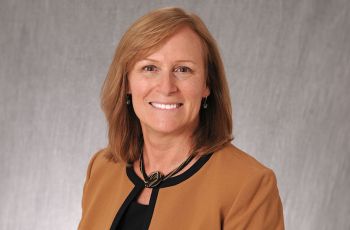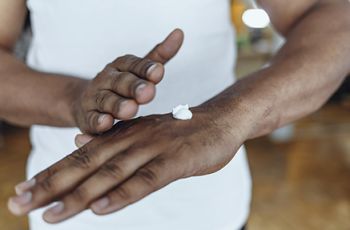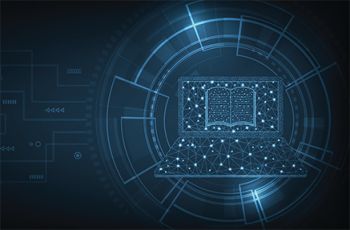When Tim Russert, the longtime moderator of Meet the Press, died in the offices of WRC-TV in Washington, D.C., he did not succumb to a “massive heart attack,” as some reports suggested. Instead, he died of a sudden arrhythmia — sometimes called “sudden cardiac death” — when his heart’s electrical pulse lost sync and went haywire.
An autopsy found that a piece of plaque had broken free in one of Russert’s arteries, lodging in a blood vessel that feeds the heart. That section of Russert’s heart lost oxygen. This ischemia, in turn, induced ventricular fibrillation — uncontrolled twitching of the muscle fibers in the lower chambers of the heart. Instead of pumping blood, Russert’s heart went into useless spasms. The 58-year-old died within minutes.
“Instead of following the main pacemaker of the heart, the cells that receive only partial oxygen start screaming ‘there’s something wrong here,’” says cardiac physiologist Narine Sarvazyan, Ph.D. “This message, whatever it is, interferes with the heart’s normal electrical pattern. The heart goes into fibrillation, and the outcome is usually deadly.”
According to the American Heart Association (AHA), some 300,000 Americans receive emergency treatment each year owing to sudden cardiac arrest. Yet scientists don’t fully understand how ischemia causes fibrillation — the cellular message that “something’s wrong” with the heart.
“We would like to understand why when someone has a heart attack, some people — like Tim Russert — immediately have lethal arrhythmia, and some people don’t,” says Matthew Kay, D.Sc., P.E., an assistant professor in GW’s School of Engineering and Applied Science who works closely with Sarvazyan. “That’s the big question.”
That question has prompted Sarvazyan, an associate professor in GW’s Department of Pharmacology and Physiology, and her interdisciplinary team to launch a series of projects to understand heart arrhythmias at a deep level. Their projects span the range of molecular, cellular, tissue-based, whole-organ, and animal studies. In addition, Sarvazyan’s team has begun research that could one day lead to a “Band-Aid” for the heart — patches of stem cell-derived cardiac tissue engrafted onto damaged areas.
The scary thing about sudden cardiac attacks is that they can just come out of nowhere,” says Luke Swift, a Ph.D. student co-mentored by Sarvazyan and Kay. Swift attaches a still-beating rat heart to a tiny spigot and dips the heart into a small, clear plastic box attached to a lab stand. Air is bubbling into the liquid-filled box, and tangled wires snake from the apparatus to equipment that takes images of the heart with two cameras: one recording electrical activity, a second capturing metabolic action.
This imaging system, being developed by Kay, will provide crucial data about where and when low-oxygen conditions in the heart trigger arrhythmias. In particular, the cameras will pinpoint “hot spots” where irregular rhythms originate. In patients with certain types of arrhythmias, cardiologists can zap, or “ablate,” these hot spots with a spark of electricity to the area. At The George Washington University Hospital, specialists regularly perform such procedures, says Marco Mercader, M.D., a clinical electrophysiologist who collaborates with Sarvazyan and Kay. Mercader says the ablation procedure successfully resolves arrhythmias in about 70 percent of patients, but with the benefit of better imaging, those figures could be better still.
With the rat heart prepared, Ph.D. student Huda Asfour consults three computer screens in a corner of the cramped experiment room. An electrical engineer, Asfour writes computer code that processes the heart images for closer scrutiny. As Swift dips two metal leads into the bubbling heart box, the monitors blink to life, displaying a trace of the heart’s electrical activity. The rhythm is erratic at first, then settles into the familiar spike-and-line pattern of a normal heartbeat.
Asfour positions a camera about a foot in front of the heart, then bathes the heart in green light. She explains that the light excites a voltage-sensitive dye — Swift injected it into the heart earlier — that fluoresces as cells become electrically active. The dye allows the camera to record the precise patterns of electrical activity swirling through the heart.
Swift tightens a small suture around the coronary artery at the top of the heart, choking offoxygen. The team wants to see how this localized ischemia impacts the heart’s normal electrical rhythm. A second camera records the fluorescent intensity of a naturally occurring compound called NADH. The compound glows with increasing intensity as the tissue is starved of oxygen. Swift switches off the overhead light and the room glows green. “Now this looks like science,” Swift says, smiling.
The room gets crowded and activity picks up as Kay and a Ph.D. student enter. The ECG rhythm has changed; it is double spiking. The heart is contracting twice rapidly, a condition that may complicate data analysis. Kay and Swift fiddle with the tubes and wires poking into the heart box. Kay suggests warming the heart. The ECG rhythm settles momentarily, then reverts. “It’s double spiking again,” Asfour says.
When the rhythm stabilizes, Asfour runs the cameras. She starts them with a click, and data from the devices flows into the computer. In just a few seconds, the data run is over. Minutes later, Asfour runs the cameras a second time. She’s unsure if the data will be clean enough to work with — the double spikes have returned.
“The studies are technically challenging,” Kay says, adding that the team did retrieve useful data from the experiment, even though things didn’t go according to plan. “Usually about half the time we’re successful at collecting the data we need to answer our questions.”
And so, in fits and starts, science moves ahead.
Days later, Kay discusses the heart imaging experiments, studies for which he and Sarvazyan have received a new five-year grant from the National Institutes of Health. While inducing ischemia in the rat heart, the metabolic imaging camera pinpoints small areas screaming for oxygen. That data is then overlaid on images of electrical flow around the heart. Together, the two data sets reveal where and when the ischemic regions trigger arrhythmia. So far, the studies have shown that premature beats — a type of arrhythmia — often begin at the boundary of the ischemic regions.
It’s a Tuesday afternoon, and Sarvazyan has gathered her team for a meeting. Assistant Research Professor Zaruhi Karabekian, Ph.D., presents the latest experiments in Sarvazyan’s second project, the effort to design Band-Aids for the heart. Worldwide, in a series of human trials, researchers are attempting to repair heart damage using stem cells derived from the patients’ own blood and bone marrow. But these studies have shown only transient benefits, and Sarvazyan says one reason is that the injected cells fail to engraft in the damaged heart.
Ultimately, Sarvazyan believes patches of heart cells grown from either embryonic stem cells or adult cells returned to the embryonic state could be designed to permanently stitch themselves into the heart. In a step toward that goal, the team has engineered a new type of stem cells to produce surplus sticky proteins on their surface. These two sticky proteins, called N-cadherin and connexin-43, help bind patches of the new heart cells to the existing tissue. Whereas N-cadherin aids the cells’ connections, connexin-43 helps them fire together, a discovery the team made three years ago.
Next, a student who spent her summer in the lab before heading to medical school at GW, Sana Idrees, presents the results of her experiments. She’s been working with Karabekian on another aspect of the heart Band-Aid project: reducing the immune system profile of newly grown heart cells, a project for which Karabekian recently received an AHA grant. Every cell in the body carries a passport, Sarvazyan explains, called the major histocompatibility complex (MHC). If a cell has the wrong passport — meaning the cell has been transplanted — the immune system will attack it as a foreigner. In ongoing clinical trials of various types of stem cells for heart repair, researchers are finding that after several weeks, all evidence of the implanted cells has disappeared. The implanted cells don’t engraft in the heart, where they could provide a long-term boost of pumping power. To make viable heart grafts that don’t suffer this fate, the team hopes to squelch production of MHC. Cells without an MHC passport will, in essence, be invisible to the immune system. Such a step could be key to developing a viable heart therapy, says Sarvazyan. “We really need to … understand how to implant these heart stem cells in a way that is durable, so the cells stick,” she adds.
The field of cardiac stem cell therapy is nascent, according to Sarvazyan, similar to where bone marrow transplantation for leukemia was decades ago. “We really need to go back to the blackboard and understand the basics of cellular activity” before cell transplants can be improved to help heart patients, she says. If a pending NIH grant is funded, it would provide Sarvazyan the means to scale up the heart-patch experiments in live animals, to see if her team can make tissue patches that engraft properly in the heart and conduct electrical signals.
Of course, there are no guarantees that those experiments, if funded, would work. And so Sarvazyan takes the long view, as any basic scientist must. She knows that the human health applications of her work are years, if not decades, off. The cardiac physiologist is moved by the same desire that drives every other scientist: the quest to understand, to accumulate knowledge, to explain some corner of the universe.
Not that it’s easy. “I tell my students when they come into the lab that out of 10 experiments, maybe only one will work,” she says. “You have to have enough drive and feel enough inspiration from those successes to push you through to the next set.”


